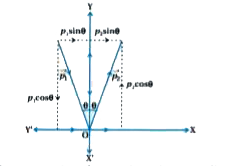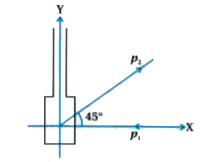Text Solution
Verified by Experts
|
Topper's Solved these Questions
LAW OF MOTION
KUMAR PRAKASHAN|Exercise SECTION -B (ADDITIONAL EXERCISE )|17 VideosView PlaylistLAW OF MOTION
KUMAR PRAKASHAN|Exercise SECTION -B (NUMERICAL FROM DARPAN BASED ON TEXTBOOK)|8 VideosView PlaylistLAW OF MOTION
KUMAR PRAKASHAN|Exercise SECTION -B (NUMERICAL FROM TEXTUAL ILLUSTRATION)|12 VideosView PlaylistGRAVITATION
KUMAR PRAKASHAN|Exercise QUESTIONS PAPER Section - D|1 VideosView PlaylistMACHANICAL PROPERTIES OF SOLIDS
KUMAR PRAKASHAN|Exercise QUESTION PAPER|11 VideosView Playlist
Similar Questions
Explore conceptually related problems
Knowledge Check
A
B
C
D
Submit
Similar Questions
Explore conceptually related problems
KUMAR PRAKASHAN-LAW OF MOTION-SECTION -B (NUMERICAL FROM TEXTUAL EXERCISE)
- One end of a string of length l is connected to a particle of mass m a...
03:00
|
Play - A constant retarding force of 50 N is applied to a body of mass 20 kg ...
03:07
|
Play - A constant force acting on a body of mass 3.0 kg changes its speed fro...
02:49
|
Play - A body of mass 5 kg is acted upon by two perpendicular forces 8 N and ...
03:49
|
Play - The driver of a three-wheeler moving with a speed of 36 km/h sees a ch...
02:50
|
Play - A rocket with a lift-off mass 20,000 kg is blasted upwards with an ini...
03:49
|
Play - A body of mass 0.40 kg moving initially with a constant speed of 10 m ...
06:23
|
Play - A truck starts from rest and accelerates uniformly at 2.0 m s^(-2). A...
07:15
|
Play - A bob of mass 0.1 kg hung from the ceiling of a room by a string 2 m l...
02:39
|
Play - A man of mass 70 kg stands on a weighing scale in a lift which is movi...
03:36
|
Play - Shows the position-time graph of a particle of mass 4 kg. What is the ...
05:01
|
Play - Two bodies of m asses 10 kg and 20 kg respectively kept on a smooth, h...
06:45
|
Play - Two masses 8 kg and 12 kg are connected at the two ends of a light ine...
06:01
|
Play - A nucleus is at rest in the laboratory frame of reference. Show that i...
02:53
|
Play - Two billiard balls each of mass 0.05 kg moving in opposite directions ...
03:51
|
Play - A shell of mass 0.020 kg is fired by a gun of mass 100 kg. If the muz...
01:18
|
Play - A batsman deflects a ball by an angle of 45^(@) without changing its i...
03:44
|
Playing Now - A stone of mass 0.25 kg tied to the end of a string is whirled round i...
05:06
|
Play - If, in , the speed of the stone is increased beyond the maximum permis...
02:24
|
Play - Explain why (a) a horse cannot pull a cart and run in empty space, ...
07:07
|
Play

